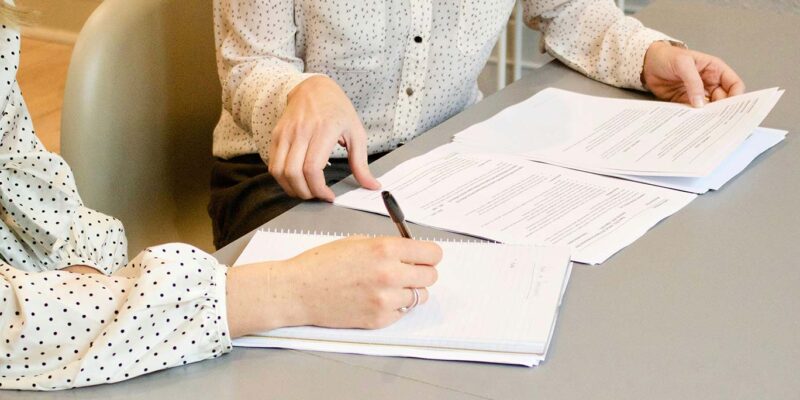Manchester 0161 832 2500 | London City 0204 505 8080 | London Finchley 020 8349 0321
Secure PaymentBy Paul Stedman, Partner and Head of the BBS Employment Team
You can download a PDF of this article here – Updated Guidance for Employers 15 May 2020
There have recently been various developments in respect of the Government’s Coronavirus Job Retention Scheme (“CJRS”).
How is CJRS working in practice?
The Government portal for claiming grants opened on 20th April 2020. From what we have heard, the system has been operating surprisingly well.
The Government has issued guidance on how to make claims through the portal. There is also a useful YouTube video explaining the system.
How long is the scheme open for?
As it stands, the CJRS in its current form is available until 31st July 2020.
The Government announced on 12th May that the Scheme will be extended further, until the end of October 2020, although it is suggested the employers may need to contribute to furlough pay from 1st August 2020. We expect further information on how the scheme will operate after 31st July shortly.
How often can employers submit a claim?
Employers can only submit one claim during a “claim period” for each PAYE scheme it operates.
“Claim period” is not defined, but the portal allows employers to set their own claim period when submitting claims. The end date for any claim period cannot be any more than 14 days in advance.
“It is vitally important that employers ensure that all of their furloughed workers are included on the claim when it is submitted. It is not possible to make changes retrospectively.”
When are payments made?
Payments should be made within 6 working days of submission.
What else is new?
Furlough and holidays
Accrual
Annual leave does accrue during furlough leave. Employers can ask furloughed workers to agree that only statutory annual leave accrues during furlough leave, although workers may be unlikely to accept this, and it could lead to complicated calculations of accrued leave entitlement when the worker returns to work.
Carry Over
Legislation has been passed that allows workers to carry over up to four weeks annual leave if they are unable to take their holiday allowance in a leave year because it was not ‘reasonably practicable’ to take annual leave ‘as a result of the effects of the coronavirus (including on the worker, the employer or the wider economy or society)’.
This is similar to the law regarding workers who are unable to take holiday because of illness and is likely to apply in the main to workers who are self-isolating or shielding for prolonged periods.
As most employers’ leave years run January to December, or April to March, this will hopefully not have a big impact if people are able to return to work in the not too distant future.
Can furloughed workers take holiday, and if so, what should they be paid?
We finally have clarification from the Government that YES furloughed workers can take annual leave when on furlough.
Statutory holidays (5.6 weeks) should be paid at the normal rate, rather than the reduced furlough rate. This means that employers need to ‘top up’ salary for days taken as holiday during furlough leave.
Employers can seek consent to pay contractual holiday, over and above 5.6 weeks, at the lower rate; although this will not apply to many workers as very few will have used their statutory allowance yet.
Can employers require workers to take holiday when on furlough?
The guidance does not give clear specific guidance on this, but the likely answer is yes, so long as the employer complies with the requirement to give double the notice of the amount of leave to be taken. For example, an employer would need to give 2 weeks’ notice to require a worker to take 1 week’s leave.
Where an employee is shielding or self-isolating, the employee may have strong grounds to say that they are unable to take holiday on the basis that they cannot rest and relax. We would encourage clients not to require employees who are shielding or self-isolating to take annual leave – remembering of course that the employer can require them to take annual leave when they are no longer shielding or self-isolating.
Maternity, Paternity and Adoptive Leave (etc) Pay
The snappily titled ‘Maternity Allowance, Statutory Maternity Pay, Statutory Paternity Pay, Statutory Adoption Pay, Statutory Shared Parental Pay and Statutory Parental Bereavement Pay (Normal Weekly Earnings etc.) (Coronavirus) (Amendment) Regulations 2020’ confirm that pay for anyone taking any leave from the long list in the title will be calculated based on their normal full pay, rather than the reduced furlough rate.
Confirming/agreeing furlough status
After significant confusion, where the Regulations stated that the furloughed worker had to agree in writing that they would not carry out any work when on furlough leave, new guidance has been issued to make it clear that employers simply need to have a record that they have written to the worker confirming that they will not carry out any work for at least three weeks. Strictly speaking, there is not therefore a requirement for the worker to confirm their acceptance in writing. We do nonetheless advise clients to try and get email confirmation where possible.
Record Keeping
All employers must keep a record of the letters sent furloughing workers, for five years. We expect that HMRC will be out in force undertaking audits of companies who have furloughed workers to uncover any foul play. HMRC has not set out what penalties may be imposed for abuse of the system, but it likely that there will be.
Can workers get another job when furloughed?
The Government is keen to ensure that the country keeps running and it has made it clear that furloughed workers can carry out work for other employers, where permitted by the employer that has furloughed them. Furloughed workers cannot however carry out work for associated or linked companies.
Workers will usually require the consent of their employer to carry out any work when furloughed. We encourage our clients to be flexible. So long as any new work is temporary and will not interfere when the worker returns to full duties, this should not be a problem in most cases.
Can you furlough workers who transferred under TUPE after 28 February?
Yes. Again, the updated guidance has addressed this point.
What we still don’t know?
Notice Pay for furloughed workers
Inevitably, some furloughed workers will lose their jobs as a result of the downturn. It is not yet clear whether employers should serve notice based on the reduced furlough rate or on the contractual full pay.
Where an employee has the statutory minimum notice period (one week for each year served), the notice pay will have to be paid at the full rate.
Where somebody has a contractual notice period that is greater than the statutory minimum, the starting position is that notice pay is paid at the rate that the individual is being paid at the point at which notice is served. In the case of sickness absence for example, this often means that people on long term sick only get statutory sick pay during their notice period.
On that interpretation, furloughed workers who are served notice because their job is redundant, could only get notice pay at the reduced furlough rate.
However, many commentators expect that employment tribunals will find ways of ensuring that furloughed workers are not further disadvantaged and that their notice pay is paid at their full rate.
We expect developments and litigation in this area moving forward.
Life after furlough
With the gradual relaxation of lockdown employers will soon be asking their staff to return to work from furlough leave.
There are likely to be cases where people refuse to return to work and/or are unable to return to work because they are shielding.
Where people refuse to return to work due to health and safety concerns, employers may find themselves faced with whistleblowing or health and safety related claims if those workers are disciplined or forced to work against their will.
If you need advice regarding the CJRS, about bringing employees back to work, or about potential redundancies, we encourage you to contact the Employment Team on 0161 832 2500 or 0204 505 8080.


